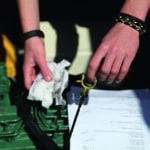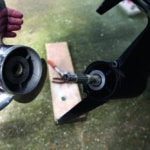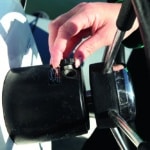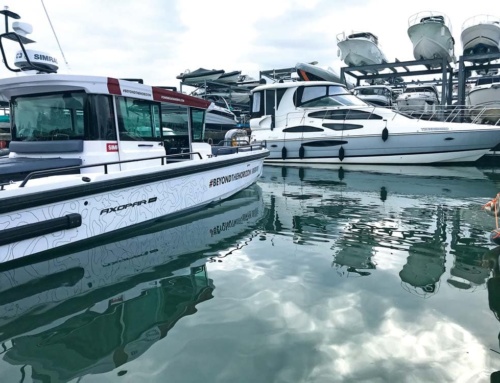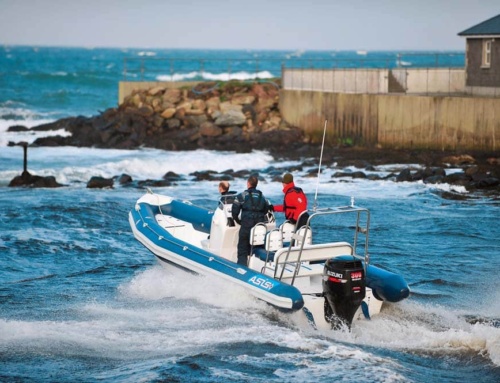As summer draws to a close, boaters everywhere are faced with the question of whether to keep their boat available for use or winterise it. Paul Glatzel looks at both options …
When I first started boating, winters seemed a whole lot harsher than they are today, and it was the norm to get to the end of September, get the boat ready for winter and then not see it again until Easter. As winters have got a bit easier, so many more people are making the most of their boat and getting out on those beautiful sunny winter days. Doing so, though, is not for everyone, so in this article we’ll look at both options and come up with some hints, tips and tricks for looking after your boat as the nights draw in.
Getting afloat over the winter can be great if it suits you, those that boat with you and the craft itself. Winter days can sometimes be really warm, but remember to pack some extra clothes, snacks and drinks, and that you may need to be a bit more self-sufficient on the water as there will be fewer other boats around to assist you if you break down or have an issue. Joining Sea Start, if it operates in your area, can be a good idea, as would be having the numbers of a few friendly boaters that would come to your aid if you needed a little assistance. Check all your safety gear and ensure you have a VHF on board and know how to use it, and always ensure someone (a friend or the coastguard) knows where you are going and when you are due back. In the right conditions, with the right preparation, winter days afloat carry no greater risk than at any other time of year, but if things start to go wrong, an issue that in summer may leave you bobbing around on a warm evening waiting for assistance can suddenly become serious if it gets dark, cold and the weather turns.
So what about the things to think about for winter boating?
If you intend keeping your boat afloat over the winter, do check your insurance policy as certainly if it is on a mooring it is likely to have some winter restrictions. It is unlikely that there are any other winter stipulations, but best check the policy anyway.
Consider moving most of the kit you keep on board to a dry location as the dampness that can be ever present during winter can make kit mouldy and wreck it. This is especially true for safety-related items such as life jackets. To protect the boat, consider either buying or getting made a breathable all-over winter cover. If you are leaving the boat outside, you may need to rig a system to ensure the cover is tight and water always rolls off and cannot pool on the cover. If on land, remove the bung and keep the bow high so that any water that does get in drains quickly out of the boat. If you have covers that just cover the cockpit area, remove these as they will tend to get mildew or go green if left under an all-over cover.
The end of the summer season is a good time to clean the battery terminals, grease them up and ensure they are getting a really good connection, as the greater burden placed on a battery starting an engine in the cold can easily cause starting issues. Get behind or inside the console and spray all of the electrics with WD-40 (or similar). I am generally somewhat in two minds about opening up electrical connectors and WD-40’ing them, as with critical connections sometimes disturbing them creates more issues than it solves, so take a view with each one you come across. Test your navigation lights and ensure you have spare bulbs, as while you would plan to be back before dark, there may be some days that necessitate having them on. Given that you will be using the boat less over the winter, and thus there will be more days when the boat lies idle, make sure you check the steering and throttle cables and grease up wherever you can to prevent them seizing due to occasional use.
With regard to the engine, spraying it with a silicone spray should give it good protection from the winter elements, with the electrical parts getting WD-40 instead. Resist the urge to spray the engine with WD-40, though, as over time this can dry with heat to a yellowish film. Check all fluid levels, and if leaving an engine in a very cold area where water in it may freeze, look to drain out any fresh/sea water in the engine/outdrive leg. If there is a closed cooling system, ensure that it is topped up with coolant of a type relevant to the likely lowest temperature.
In terms of fuel, my approach over the winter has always been to keep the tank fully topped up, thereby reducing the opportunity for condensation in the tank and thus keeping water out of the fuel system. Draining is another option, but what you do with the fuel once removed and the process of getting it out can be challenging.
If you decide to fully ‘winterise’ the boat, then this is something that you can either get a marine engineer to do or do yourself. A simple winterisation will entail all that we have already addressed plus removing the spark plugs and injecting inhibitor into the cylinders. When we used to winterise our personal boat we’d always get the marine engineer to do it as they would combine winterising the boat with the end-of-season service. The benefit of servicing at this time of year was that once we got to spring there was no need to arrange a service, and we could just get everything together on the boat, start up and go.
Another thing to consider is that if you are laying the boat up, you should remove the battery and store it somewhere other than on a cold concrete floor. Consider getting one of the smart battery chargers and regularly switching it on to keep the battery fully charged – most you can now leave plugged in the whole time and they only start charging when needed.
The onset of winter is a good time to check your trailer, if you have one, as a busy summer of launches with the salt getting into the brakes will guarantee jammed brakes in the spring if you don’t sort them. If possible (and safe), always leave the handbrake off on the trailer anyway as it reduces the chances of the brakes getting stuck.
Only you can decide which approach best suits you, but for many nowadays, making the most of the boat over the winter effectively reduces the cost per use of the boat, making it easier to justify the expense. Whatever your thoughts, the onset of winter requires some effort to ensure that your boat is either fit to get afloat or is ready for the new season. Never forget the maxim ‘If you look after your boat, she will look after you’. Have fun!


